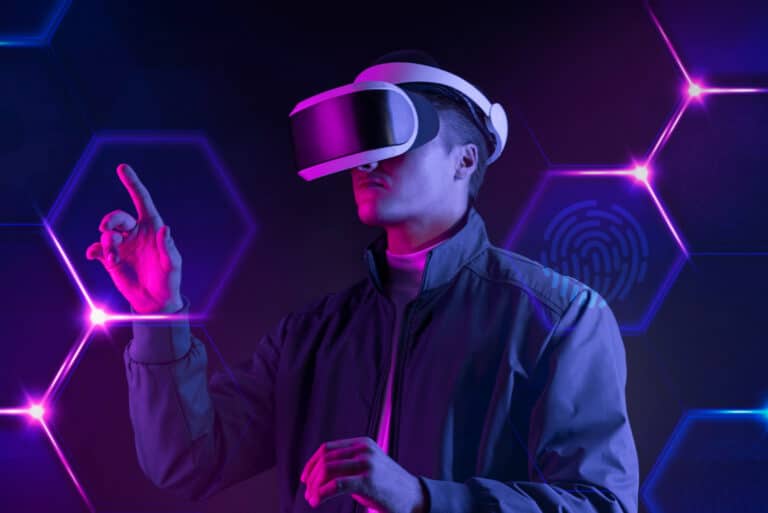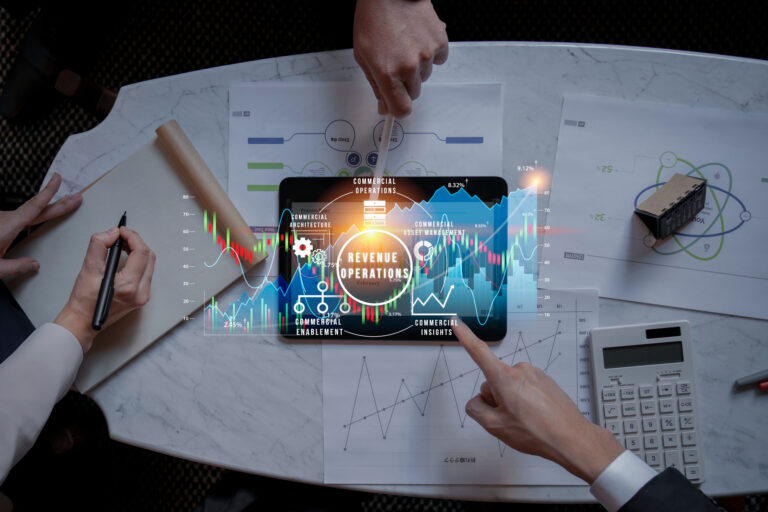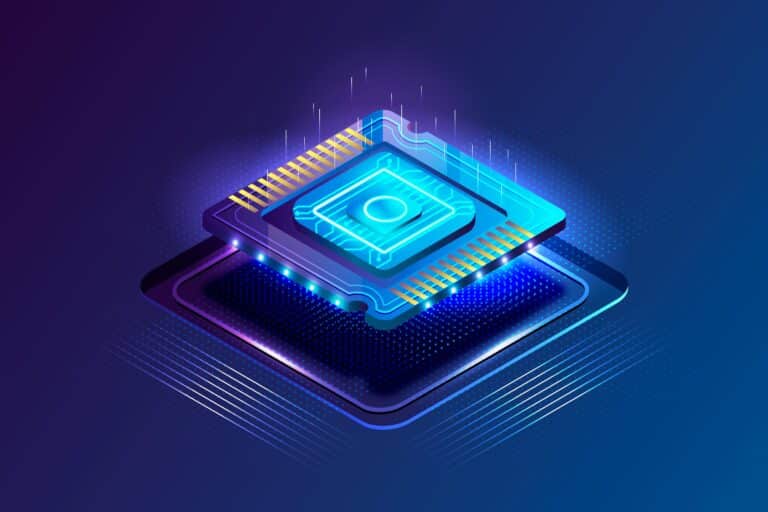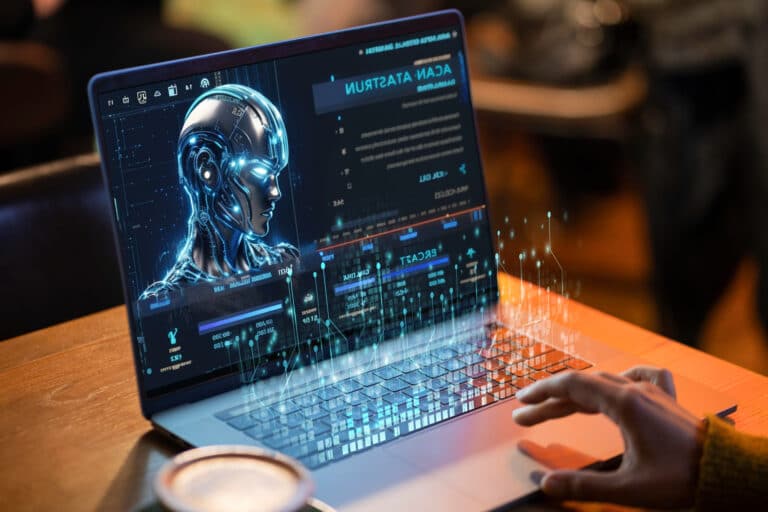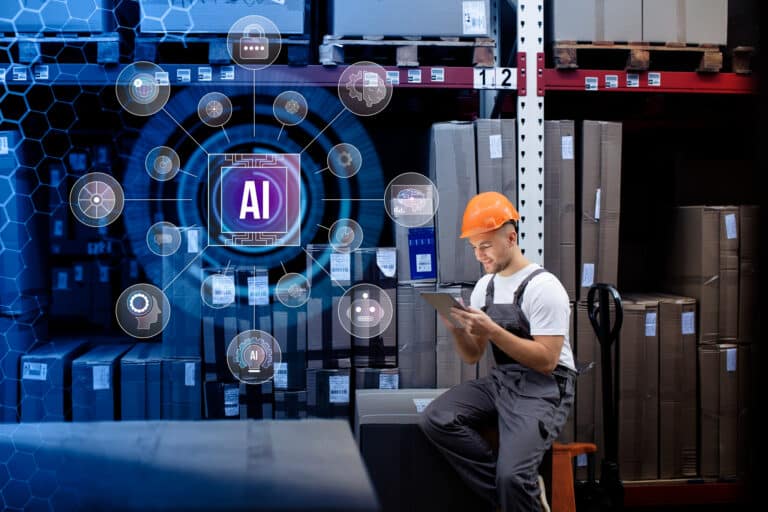In recent years, What is Extended Reality? XR (cross Reality) has become more common.
It will help those who want to understand XR and what it means in a nutshell or those who have questions such as, “I understand AR and VR, but is XR the same?” By using examples, we will explain the differences between the two.
If you are considering utilizing XR in your business, please take a look at the market size and future prospects.
What is Extended Reality?
The term “XR” stands for Extended Reality/Cross Reality and is a technology that fuses real physical space and virtual space to create new experiences.
XR is a comprehensive term for advanced technologies, including VR (virtual Reality), AR (augmented Reality), and MR (mixed Reality).
As image processing technology has developed, the boundaries between technologies such as VR and AR have become blurred.
Against this background, XR emerged as a comprehensive term.
Overview of why XR is so popular
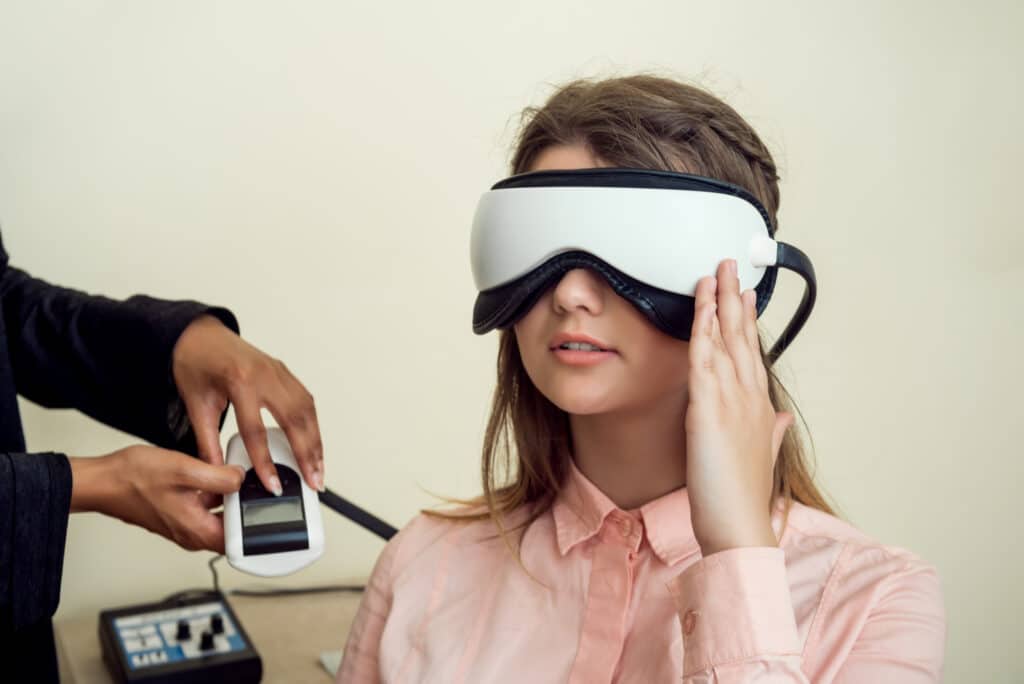
As a technology that enables us to perceive things that don’t physically exist, XR is expected to be used in a variety of ways and expand into all industries.
The spread of XR technology is also due to three main factors.
Technology and devices for the next generation of software
Technology has advanced so much that it is now possible to express virtual spaces that are comparable to natural spaces using video and audio. XR is attracting attention because of its improved reproducibility of information. Although it was possible to create a virtual space with the previous generation, the image quality and internet connection delays made it not a satisfying experience.
Additionally, the performance of devices has improved, and stand-alone HMDs (head-mounted displays) and VR goggles can be started independently without a computer.
HMDs that can be plugged into smartphones have also become more affordable, enabling XR to spread.
Improved communication infrastructure speed and capacity
In Wi-Fi environments, advances in optical line technology have made it possible to achieve faster line speeds.
Even with mobile terminals, conventional 4G communication does not allow high-capacity data transmission or real-time display of high-resolution images.
In the era of 5G communication, this issue has been overcome, and a highly immersive experience can now be enjoyed.
Establishment of a new communication medium
Coronavirus has forced structural changes in society as a result of its spread. In the online environment, digital, contactless, and streamlined tools and technologies are becoming increasingly popular.
These changes have had a significant impact on the technical aspects of the XR field.
Additionally, HMDs, computers, smartphones, and smart glasses are compatible with XR.
Because everything you see is within the virtual space, HMDs provide a highly immersive and realistic experience.
In the future, devices are expected to become smaller, more sophisticated, and less expensive despite being cheaper now than when they were first introduced.
What is VR (Virtual Reality)?
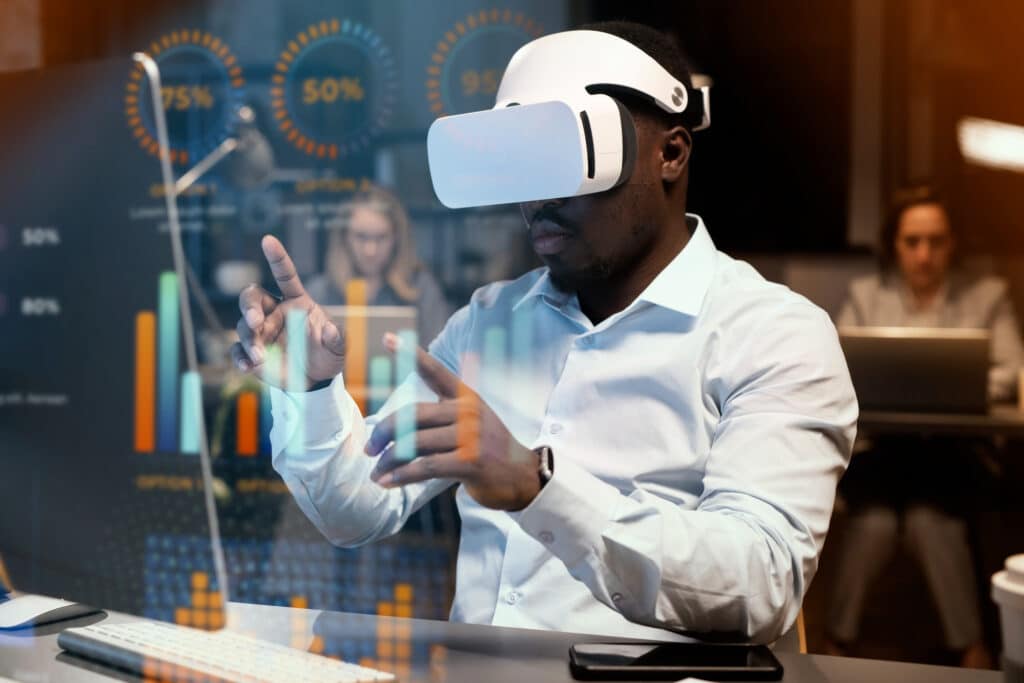
“Virtual Reality” is an abbreviation for a technology that creates an artificially created virtual environment.
VR stands for virtual Reality as well.
In a 360-degree virtual space, devices such as HMDs and VR goggles are used to provide real-time visual, auditory, and tactile information to users, giving them the feeling of being in the real world.
Since 2016, VR content has gradually become more familiar, and the concept of using an HMD and controller has matured.
Games are one of the most common uses of this technology.
VR has three main components:
VR goggles/HMDs
VR employs a head-mounted display that displays a virtual space in front of the eyes. There are two separate displays on the left and right sides of the HMD.
The field of view in virtual Reality moves simultaneously with the user’s head movements thanks to a technology called head tracking.
Controller
The controller allows you to operate it freely in VR.
Virtual objects can be moved and manipulated using controllers.
Sensor
VR requires a sensor to understand the location of the user.
The sensor detects the position of the HMD and controller and accurately reflects it in virtual space.
Reference Articles : What is VR (Virtual Reality)? What are the 3 types of VR
What is AR (Augmented Reality)?
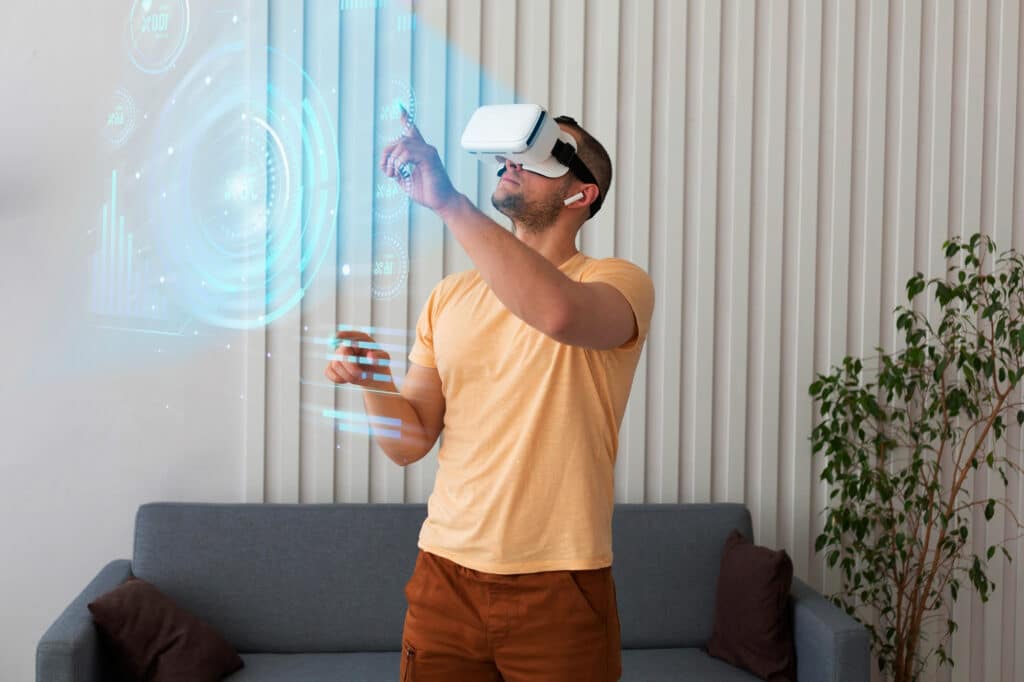
Augmented Reality refers to technology that adds or supplements information in the real world.
AR is also known as augmented Reality.
The real world can be expanded and expressed by overlaying 3D digital images on top of authentic images captured by a camera on a smartphone or tablet.
In contrast to VR, where the entire field of view is virtual, it is an image layered with information from the virtual world.
The technology has a wide range of users because it can be easily experienced on a smartphone alone, and it is the most established among XR technologies.
In fields such as smartphone applications and video processing, augmented Reality is used.
Among the familiar things, most people have probably used the game app ‘Pokemon GO,’ in which CG characters appear on natural scenery, and ‘SNOW,’ which overlays CG characters on people’s faces.
Reference Articles : What is AR (Augmented Reality)? Explanation of Augmented Reality Scope
What is MR (Mixed Reality)?
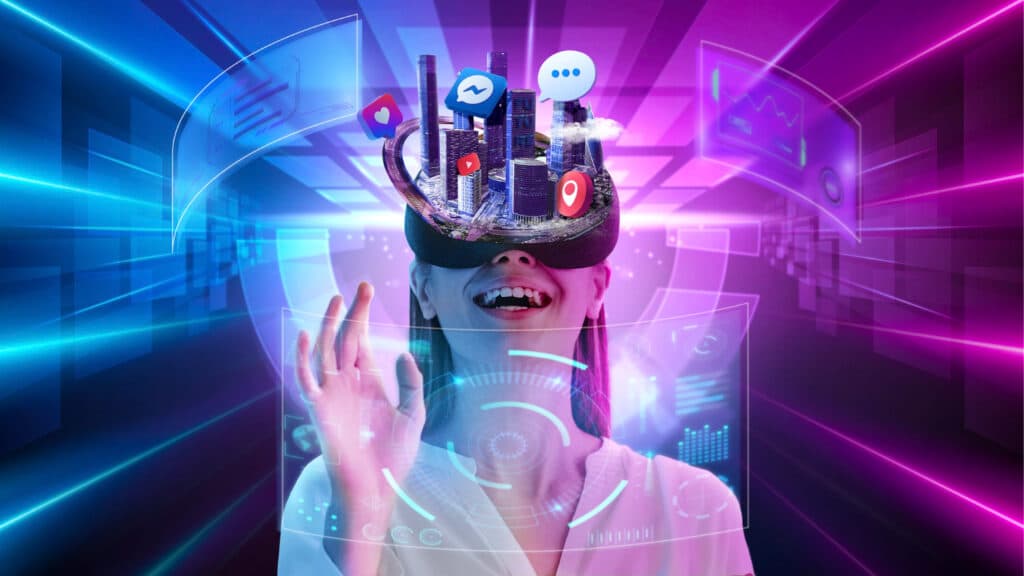
The term “Mixed Reality” refers to a technology that fuses the real world with virtual space.
Mixed Reality is also known as mixed Reality.
MR combines the natural world and virtual space, allowing users to manipulate real objects and reflect objects created in virtual space.
The main difference between MR and AR is that AR allows objects to be viewed only from a fixed angle.
Meanwhile, MR can view target CG objects from all 360° angles using smart glasses or headsets.
In addition, AR can directly interfere with the CG projected in Reality.
MR can also be experienced simultaneously by multiple people.
A futuristic business scene can also be created, such as projecting people from far away to have a meeting as if they were together, or displaying blueprints as holograms so that everyone can see them at the same time. That’s how it works.
Microsoft’s HoloLens 2 is a typical MR device.
Through translucent goggles, users can see the natural world around them and manipulate CG information projected onto the goggles.
MR is widely used in manufacturing, construction, medical care, and entertainment. Users will be able to experience more realistic sensations, leading to more practical and effective services and usage methods.
Reference Articles : What is a Key Feature of Mixed Reality? How Does Mixed Reality Expand on Augmented Reality
Extended Reality application examples in each field
Entertainment
In the virtual reality world, you can watch movies and listen to music. XR is also being used in the development of attractions and games.
An example of a VR game that uses an HMD is Capcom’s ‘Resident Evil.’
Education
You can teach history, science, and other subjects in a virtual reality world. A medical training program and a sports training program have also been developed.XR will be the future challenge in the education sector.
Business
A virtual meeting can be conducted as if it were a face-to-face meeting, although people can be projected from remote locations. Training and simulation services are also used in the manufacturing and construction industries.
Viewing the sights
Virtual Reality allows you to travel to and explore tourist destinations virtually. Guides and tourist guides have also been developed and used in the tourism industry.
Medical care
The patient’s condition can be viewed virtually. The clinical field has additionally evolved and used answers for careful preparation and surgical training during a medical procedure.
Manufacturing industry
By using MR at manufacturing sites, manufacturing processes can be faster and more accurate than when using conventional methods. To simulate manufacturing processes, you can add virtual parts to real objects or place virtual tools in real environments.
Construction industry
MR allows for a more accurate understanding of building layout and design at construction sites. Virtually rendering a building’s interior in 3D space is also possible.
Extended Reality Future

Advancements in hardware and software should enable high-quality images and smoother XR experiences.
By combining XR with AI, it is expected to provide a more advanced experience.
Regarding XR technology, the following five points are expected.
Improving device performance
The advancements in hardware are aiming for even higher image quality and faster speeds. Virtual spaces will also become more natural and smooth as AI technology advances.
Accelerating communications infrastructure
XR experiences should become faster and more real-time as 5G spreads.
High-speed communication is expected to enable smoother mutual communication and remote collaboration without delays.
To achieve even higher speeds, 6G, the 6th generation communication system, has been developed.
Smart glasses
It is expected that lighter and brighter glass-shaped XR devices will become more popular than HMDs (head-mounted displays) in the near future.
Virtual Reality can be experienced smoothly and naturally through smart glasses.
Expansion of XR utilization
Entertainment and business are already using XR technology. Still, it is expected to penetrate and become Widely established in many fields, including medicine and education, in the future.
Building an XR ecosystem
Diverse companies are expected to collaborate to provide more advanced and easy-to-use XR technology as the XR ecosystem continues to grow.
Summary
XR technology will continue to grow without a doubt in the future, contributing to streamlining business operations and improving user convenience in the process.
With the realization of XR, concepts that have been considered common sense are changing.
XR technology will become increasingly important as digital technology continues to advance.
The future direction of business will be significantly impacted by it, especially in terms of business.
XR technology should be effectively incorporated into small and medium-sized businesses at an early stage, not only by large companies but also by small and medium-sized enterprises.
Because multiple people can participate, it can be used in a variety of fields, such as VR exhibition halls and product proposals to customers. When recruiting companies, advanced technology can also serve as a point of appeal to job seekers.


